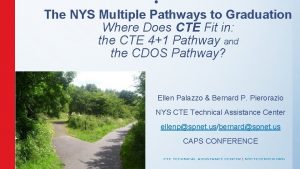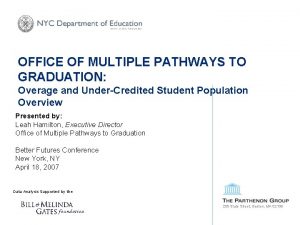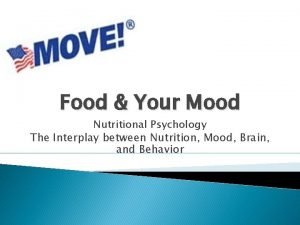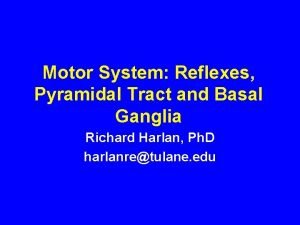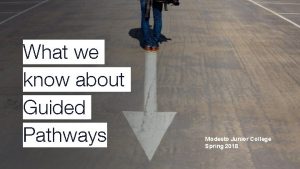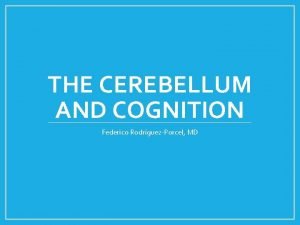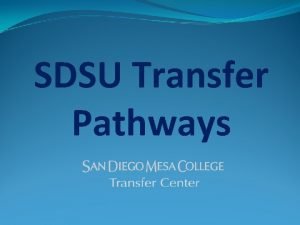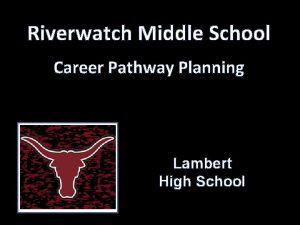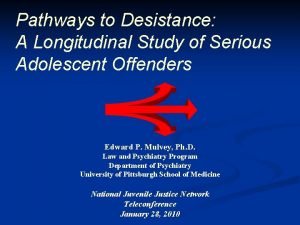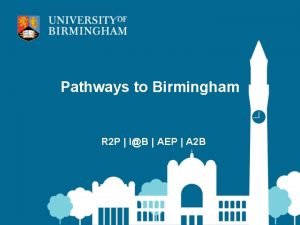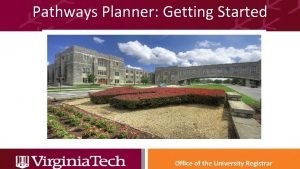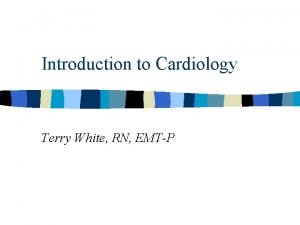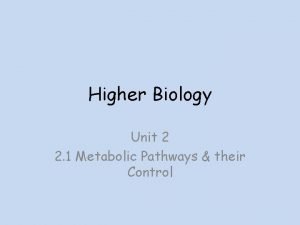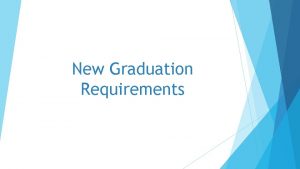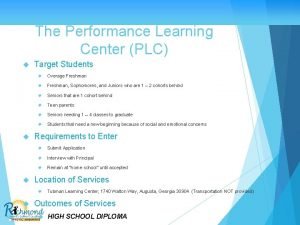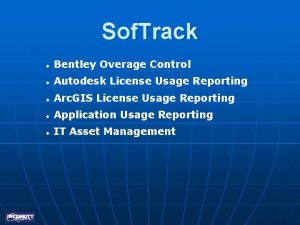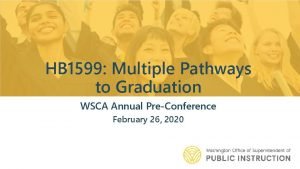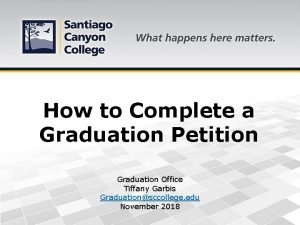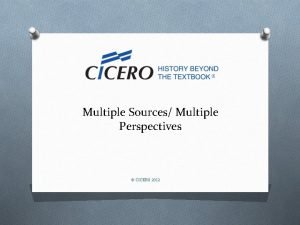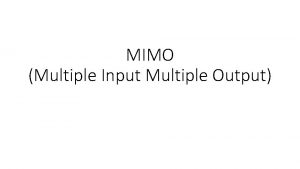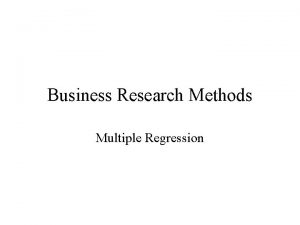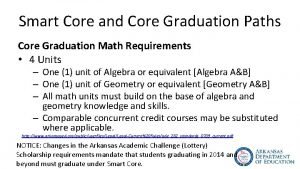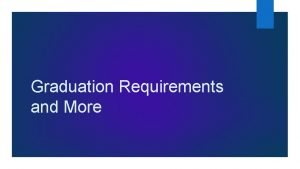OFFICE OF MULTIPLE PATHWAYS TO GRADUATION Overage and





















- Slides: 21

OFFICE OF MULTIPLE PATHWAYS TO GRADUATION: Overage and Under-Credited Student Population Overview Presented by: Leah Hamilton, Executive Director Office of Multiple Pathways to Graduation Better Futures Conference New York, NY April 18, 2007 Data Analysis Supported by the 200 State Street, Boston, MA 02109

Sizing the Challenge Core Analyses NYC DOE Multiple Pathways Strategic Planning Process Sizing the Challenge Profiling the Target Population Identifying Effective Options • Assess the overlap of overage and under-credited students with the dropout population • Identify the size of the overage and under-credited population: - In a snapshot view: How many students are there at a point in time? - In a cohort view: What percent of students become OA-UC during high school? • Segment the population by age and number of credits earned toward graduation 2

Sizing the Challenge Nearly All High School Dropouts in NYC Have a History of Being Overage and Under-Credited • The dropout population is the overage and under-credited population, just at different points in time • By contrast, only 19% of graduates were once overage and under-credited in high school Graduates and Dropouts by Overage and Under-Credited Status, Class of 2003 Cohort Note: Excludes District 75 Students Source: ATS Data 3

Sizing the Challenge Nearly 140 K NYC Youth Age 16 -21 Have Dropped Out or Are Significantly Off-Track for Graduation • Including in- and out-of-school youth, there approximately 138 K overage and under-credited youth in New York City at any given point in time In- and Out-of-School Overage and Under-Credited Youth, by Age on June 2005 Note: Includes District 75 students; Students are counted as out-of-school youth only if they are dropouts (as opposed to other discharges) Source: ATS Data 4

Sizing the Challenge Approximately Half of All Entering Freshmen Become Overage and Under-Credited During High School • Overage and under-credited students are at least two years off-track relative to expected age and credit accumulation toward earning a diploma Percent of Students who Become Overage and Under-Credited in the Class of 2003 Cohort 48% Definition of Overage and Under-Credited Age Credits Age 16 Fewer than 11 Credits Age 17 Fewer than 22 Credits Age 18 Fewer than 33 Credits Age 19 -21 Fewer than 44 Credits Note: 44 credits are required for graduation in New York City 2 Credits = 1 Carnegie Unit Note: Excludes District 75 students; Includes all students who were OA-UC at any point in their high school career Source: ATS Data 5

Sizing the Challenge Majority of OA-UC Students Have Completed Less than One. Quarter of Credits Required for Graduation • 57% of overage and under-credited students have fewer than eleven credits - Nearly 7, 000 enrolled students are at least 18 years old with fewer than eleven credits (11% of all overage / under-credited students) Overage and Under-Credited Students by Age and Credit Attainment, June 2005 Note: Excludes District 75 students Source: ATS Data 6

Profiling the Target Population Core Analyses NYC DOE Multiple Pathways Strategic Planning Process Sizing the Challenge • Profiling the Target Population Identifying Effective Options Determine relationship between incoming skill levels and becoming overage and under-credited - Quantify the proportion of students who enter HS “on-track” but become OA-UC • Analyze progression of OA-UC students throughout their HS career - Timing of when in high school students fall off-track - Patterns and outcomes once students have become OA-UC • Measure graduation rate for OA-UC students - Capture timing of graduation and the type of degree earned 7

Profiling the Target Population Although Literacy Is a Leading Challenge for OA-UC Students, 30% Enter High School with Sufficient Skills on 8 th Grade Exams June 2005 Overage and Under-Credited Students Age at HS Entry Over Expected Age (15+) At Expected Age (13 -14) 8 th Grade ELA Test Score Least challenged entering high school: High Level 2 and above 5% of OA-UC (3 K students) enter high school overage but with sufficient literacy skills 24% of OA-UC (16 K students) enter high school on-age with sufficient literacy skills Most challenged entering high school: Low Level 2 and below 19% of OA-UC (12 K students) enter high school overage and with literacy challenges 52% of OA-UC (34 K students) enter high school on-age with literacy challenges Note: See Appendix for detailed description of 8 th grade ELA and Math test standards; Excludes District 75 students Source: ATS Data 8

Profiling the Target Population Overage and Under-Credited Students Require Significant Progress to Achieve Graduation • 57% of OA-UC students have earned fewer than 11 credits, despite being at least 16 years old • 68% of OA-UC students have passed zero Regents exams Overage and Under-Credited Students, June 2005 Note: Excludes District 75 students. Regents passage is counted at 55 or above Source: ATS Data 9

Profiling the Target Population Overage and Under-Credited Students Fall Behind Early, and Leave the System Rapidly Once Becoming Off-Track • 78% of OA-UC students were retained in freshman year; 93% were retained either as freshmen or sophomores • 84% of students who are 16 years old with fewer than eight credits end up leaving the system Year in Which Overage and Under. Credited Students Were First Retained Progression of Age 16 – Less than 8 Credit Students, June 2001 -05 Cumulative Attrition Rate Note: Excludes District 75 Students Source: ATS Data 35% 63% 76% 84% 10

Profiling the Target Population Only 19% of Overage and Under-Credited Students Ultimately Receive a High School Diploma or GED • 6% of OA-UC graduates receive a Regents diploma (under prior definition of passing eight Regents), while GEDs account for 20% of OA-UC graduates Age, School Type, and Credential of Overage and Under-Credited Graduates, June 2001 Cohort Note: See Appendix for detailed description of Diploma types; Excludes District 75 students; Excludes IEP diplomas; Confirmed Completion signifies proof presented of receipt of a high school diploma Source: ATS Data 11

Sizing the Challenge Core Analyses NYC DOE Multiple Pathways Strategic Planning Process Sizing the Challenge Profiling the Target Population Identifying Effective Options • Focus on identifying options with recuperative power – the ability to graduate students who have become overage and under-credited • Calculate graduation rates of OA-UC students by program type - Control for differences in population between various options - Identify proof points of success with OA-UC students, as well as invention challenges 12

Identifying Effective Options Majority of OA-UC Students Have Completed Less than One. Quarter of Credits Required for Graduation • 57% of overage and under-credited students have fewer than eleven credits - Nearly 7, 000 enrolled students are at least 18 years old with fewer than eleven credits (11% of all overage / under-credited students) Overage and Under-Credited Students by Age and Credit Attainment, June 2005 Note: Excludes District 75 students Source: ATS Data 13

Identifying Effective Options Though Articulated HS Have Limited Recuperative Power, MP Programs Demonstrate Relative Success with OA-UC Students Graduating from Articulated High Schools and Multiple Pathways Programs Note: Articulated High School data is based on students who were overage and under-credited in June 2001; Multiple Pathways graduation rate is the Class of 2003 cohort; *Outcomes of Pre-Learning-to-Work YABC models represent outcomes of legacy programs prior to 2005 -06 model enhancements Source: ATS Data 14

NYC DOE Multiple Pathways Strategy Appendix • Multiple Pathways Program Descriptions • Glossary of Relevant Terms 15

Multiple Pathways Portfolio: School and Program Descriptions Transfer Schools Young Adult Borough Centers Blended GED Programs Learning to Work Transfer Schools are small, academically rigorous, full-time high schools for students who have been enrolled in high school for at least one year and are far from promoting on grade level. Essential elements include a personalized learning environment, rigorous academic standards, student-centered pedagogy, support to meet instructional and developmental goals, and a focus on connections to college. YABCs are supportive learning environments designed for students who have been in high school for at least four years and have attained a minimum of 17 credits. The instructional model allows students to concentrate only on the credit portfolio they need for graduation through a non-traditional block schedule. Each YABC is operated through a collaborative partnership between the DOE and a community-based organization, which provides services to students, including youth development support, career and college counseling, and assistance with job placement. Students attend YABCs through a shared instructional model and receive a diploma from their high school of origin upon completion of their credits and Regents exams. OMPG’s GED Programs -- which are blended with a Learning to Work component -- prepare students for the GED and support them in developing meaningful post-secondary connections. In September 2006, OMPG launched Access, a full-time GED program, which includes a youth development approach, integrated thematic units, developmental portfolios, innovative systems for student engagement, assessment, and progression, connections to postsecondary training, and in-depth career exploration. The Learning to Work part-time GED programs use research-based instructional practices, such as a workshop model coupled with high-quality curriculum materials. Learning to Work (LTW) is designed to help students stay engaged in school by developing the skills they need to complete high school, gain employment, and succeed in post-secondary education. LTW services are provided by CBO partners and are integrated across Multiple Pathways schools and programs, including Transfer Schools, GED programs, and YABCs. LTW students have the opportunity to participate in intensive employability skills development workshops, subsidized internships, college and career counseling, and job placement. The program also includes attendance outreach, individual and group counseling, academic tutoring, 16

NYC DOE Multiple Pathways Strategy Appendix • Multiple Pathways Program Descriptions • Glossary of Relevant Terms 17

“Glossary” of Relevant Terms “Overage and Under-Credited” Definition • The NYC Department of Education has created the construct of “overage and under-credited students” to define students who have fallen off-track in high school • Overage and under-credited students are at least two years off-track relative to expected age and credit accumulation toward earning a diploma Definition of Overage and Under-Credited Age Credits Age 16 Fewer than 11 Credits Age 17 Fewer than 22 Credits Age 18 Fewer than 33 Credits Age 19 -21 Fewer than 44 Credits Note: 44 credits are required for graduation in New York City 2 Credits = 1 Carnegie Unit 18

“Glossary” of Relevant Terms Portfolio of NYC High School Options • Articulated High Schools: All high schools that accept students directly from 8 th grade - New Small High Schools: Small, Articulated High Schools that were started since Fall 2002 under the Chancellor’s initiative to create 200 New Small High Schools - Comprehensive High Schools: High schools, typically large, that provide comprehensive class options for students of differing levels • Multiple Pathways programs: - Transfer Schools: Full-time high schools offering smaller class sizes and unique student supports, including internships, college exposure, guidance support, etc. - GED Programs: Full- and part-time programs for attainment of high school equivalency diplomas; students must be at least 16. 5 years old to enroll - Young Adult Borough Centers (YABCs): Customized transition option for students who have completed four years of high school, but are still in need of credits and exit exams - LTW Programs: Workforce preparation program that is connected with an existing school or program (i. e. Transfer Schools, YABCs, GEDs); Provides opportunities and stipends for students to participate in an internship Source: NYC Department of Assessment and Accountability 19

“Glossary” of Relevant Terms NYC 8 th Grade Reading and Math Tests NYC 8 th Grade Tests • All New York State 8 th graders take ELA and Math tests that establish entering skill level prior to entering high school - Students scores are reported from Level 1 (“Below Basic”) to Level 4 (“Advanced”) - NYC considers students who score at the median of Level 2 (“High Level 2”) or above to be on-track for grade level 8 th Grade Math 8 th Grade ELA Learning standards require students to read, write, listen, and speak for: - Information and understanding - Literary response and expression - Critical analysis and evaluation Learning standards include: - Mathematical Reasoning - Number and Numeration - Operations - Modeling/Multiple Representation - Measurement - Uncertainty - Patterns/Functions Level 4 (Advanced) Students exceed the learning standards for Mathematics. Their performance shows superior understanding of key math ideas. Students meet the learning standards. Their performance shows thorough understanding of written and oral text. Level 3 (Proficient) Students meet the learning standards. Their performance shows thorough understanding of key math ideas. Level 2 (Basic) Students show partial achievement of the learning standards. Their performance shows partial understanding of written and oral text. Level 2 (Basic) Students show partial achievement of the learning standards. Their performance shows partial understanding of key math ideas. Level 1 (Below Basic) Students do not meet the learning standards. Their performance shows minimal understanding of written and oral text. Level 4 (Advanced) Students exceed the learning standards for English language arts. Their performance shows superior understanding of written and oral text. Level 3 (Proficient) Meeting Standard Below Standard Source: NYC Department of Assessment and Accountability Meeting Standard Below Standard Level 1 (Below Basic) Students do not meet the learning standards. Their performance shows minimal understanding of key math ideas. 20

“Glossary” of Relevant Terms NYC High School Graduation Rates and Diploma Types • Multiple Pathways population analysis focuses on three types of graduation rates: - 4 -year graduation rates: students who graduate by August of 4 th year of high school - 6 -year graduation rates: students who graduate by August of 6 th year of high school - Final graduation rates: students who graduate within 7 years of entering high school; by this point, almost all remaining students are over age 21 and have “aged out” of the NYC HS system • NYC high school students are eligible to receive several types of diplomas: - Local Diploma: Earn 44 credits; Pass 5 Regents at a score of 55 to 64 - Regents Diploma: Earn 44 credits; Pass 5 Regents at a score of 65 or higher · Prior to the class of 2005, a Regents diploma required passing eight Regents at a score of 65 or higher (similar to today’s requirements for an Advanced Regents Diploma) - Advanced Regents Diploma: Earn 44 credits; Pass 8 Regents at a score of 65 or higher - GED: Meet state requirements on GED exam while enrolled in a NYC DOE GED program - IEP Diploma: Some students with IEPs are awarded IEP/SPED Diplomas based on individual education needs Source: NYC Department of Assessment and Accountability 21
 Azure enterprise agreement
Azure enterprise agreement Nys graduation pathways
Nys graduation pathways Pathways to graduation
Pathways to graduation Etsu graduation office
Etsu graduation office Multiple baseline vs multiple probe design
Multiple baseline vs multiple probe design Example of mimd
Example of mimd Difference between office location and office layout
Difference between office location and office layout What is sexual script
What is sexual script Dopamine and serotonin pathways
Dopamine and serotonin pathways Direct and indirect motor pathways
Direct and indirect motor pathways Pathways modesto
Pathways modesto Cerebellar pathways
Cerebellar pathways South forsyth high school pathways
South forsyth high school pathways Sdsu adt
Sdsu adt Lambert high school pathways
Lambert high school pathways Pathways to desistance
Pathways to desistance Birmingham university distance pathways
Birmingham university distance pathways Pathways planner
Pathways planner 7 pathways
7 pathways Internodal pathways
Internodal pathways Cyber career pathways tool
Cyber career pathways tool Higher biology unit 2
Higher biology unit 2

